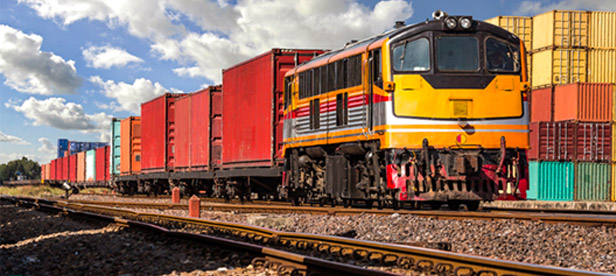News August 18, 2022
Compromises Proposed in Contentious Railroad Worker Contract Dispute
Efforts to establish a new contract for unionized rail workers matter to the promo products industry, as a strike or lockout could significantly disrupt supply chains and spur inflation.
There are some signs of progress in what’s been a contentious process to establish a new contract for unionized railroad workers, but the sparring sides haven’t resumed talks yet.
The negotiations matter to the promotional products space and other industries because a strike by railroad workers or lockout by rail lines could have dire consequences for the American marketplace, massively disrupting supply chains, further fueling inflation and ultimately hurting economic activity.

Railroad workers have been without a new contract for about two years as negotiations between their unions and railroad companies turned bitter and reached an impasse.
In fact, things became so bad that in July, President Joe Biden appointed a special Presidential Emergency Board (PEB) to help establish a deal – a move that, under federal law, also effectively prohibited a strike or lockout for 60 days.
The emergency board has now developed an approximately 120-page report with recommendations intended to serve as the framework of a new contract, and freight railroads say they’re ready to resume negotiations after what’s been a cooling-off period.
“The railroads are prepared to meet with the rail unions and reach agreements based on the PEB report without delay,” read a statement from the National Carriers Conference Committee. The NCCC represents important railroads that include Union Pacific, BNSF and CSX.
The PEB is proposing annual wage increases of between 4% and 7% through 2024. It also suggests retroactive increases of 3% for 2020 and 3.5% for 2021. During those years, the workers didn’t have a contract. PEB is also suggesting five $1,000 annual bonuses and an additional paid day off.
Looked at in a totality that includes salary, healthcare, retirement and other benefits, the union rail workers would receive average compensation of more than $150,000 annually.
Susquehanna railroad analyst Bascome Majors wrote a note called “State of the Unions - Neither Side Will Love the PEB Report,” in which it was said that the PEB split the difference between the unions’ wage demand and the railroads’ offer, Reuters reported.
The PEB has also recommended removing a cap on monthly employee healthcare contributions and allowing them to equal 15% of the overall cost of providing covered benefits. The board suggested jointly rebidding contracts to ensure costs are competitive.
Unions representing the 115,000 workers that would be covered by the contracts hadn’t commented on the PEB proposal as of the morning of Aug. 18. However, some individual railroad workers were taking to social media platforms, such as Twitter, to express their displeasure with the proposed deal. Those included Union Pacific engineer Ross Grooters.
“It’s clear academic politically motivated labor mediators are out of touch with the reality of working conditions on the railroad today,” Grooters wrote. “They chose capital over the needs of workers and our nation.”
It’s clear academic politically motivated labor mediators are out of touch with the reality of working conditions on the railroad today. They chose capital over the needs of workers and our nation. Our choice as Railroad Workers has been made very clear by contract proceedings.
— Ross Grooters (@RossGrooters) August 16, 2022
As part of efforts to reduce costs and streamline efficiencies, rail lines have axed about 45,000 jobs – roughly a third of the former workforce – over the last six years. Workers say that’s resulted in unmanageable workloads, being on call almost always and frequent heavy overtime. They also oppose rail line endeavors to trim train crews from two people to one.
If the rail lines and workers fail to reach a contract agreement by 12:01 a.m. EDT on Sept. 16, a strike or lockout again becomes legally possible. However, it’s expected that Congress would intervene to prevent that from happening.
